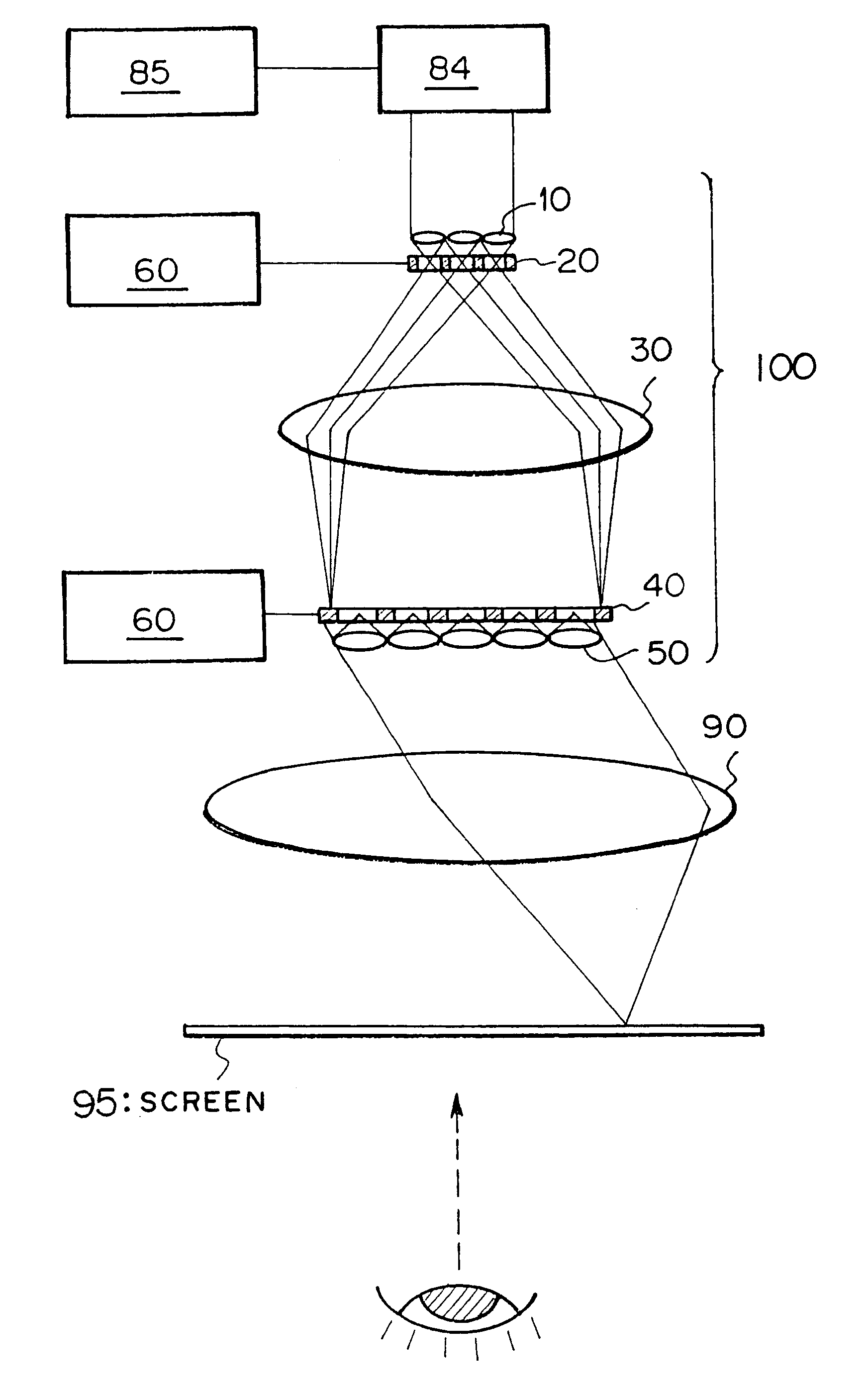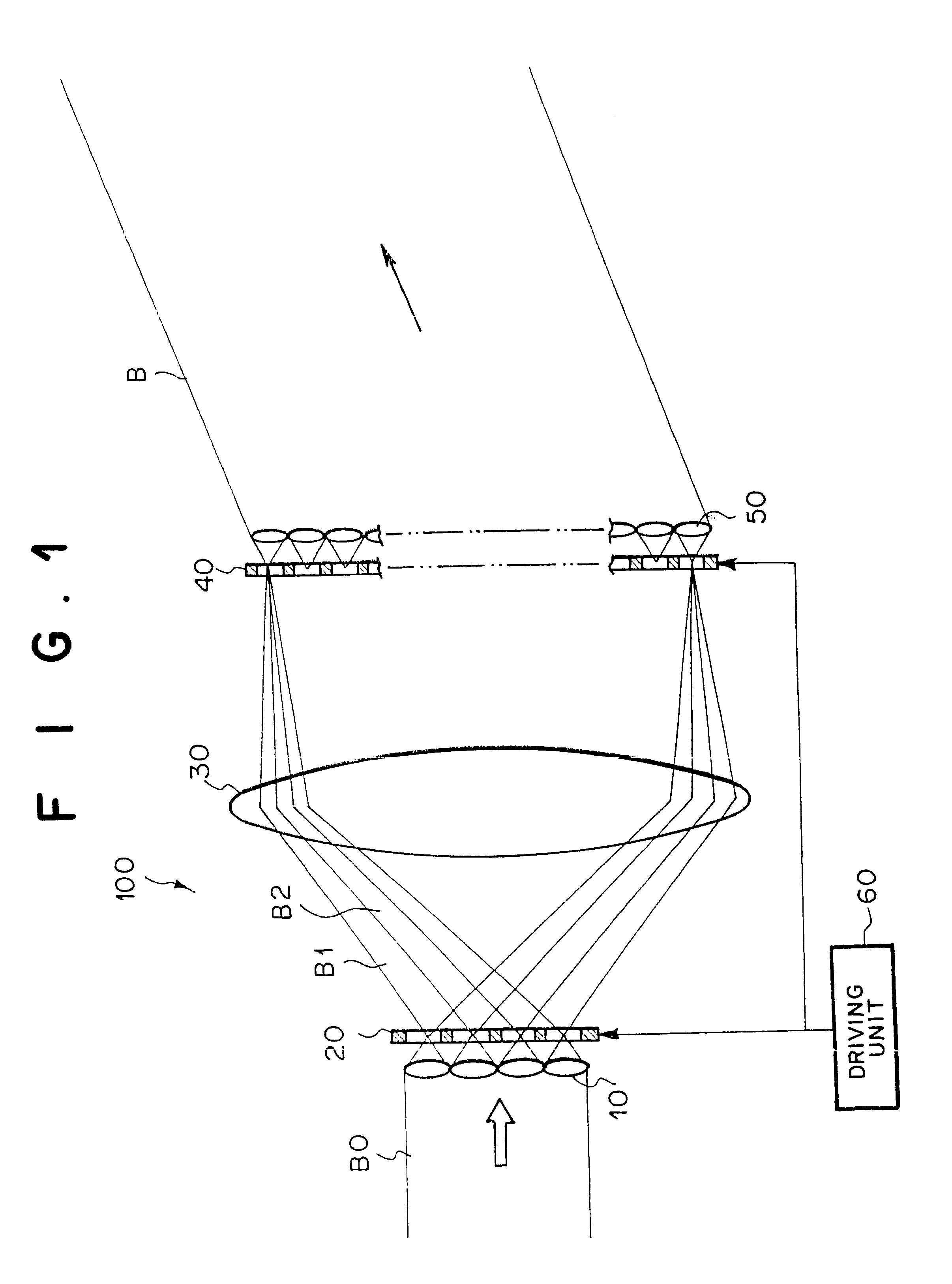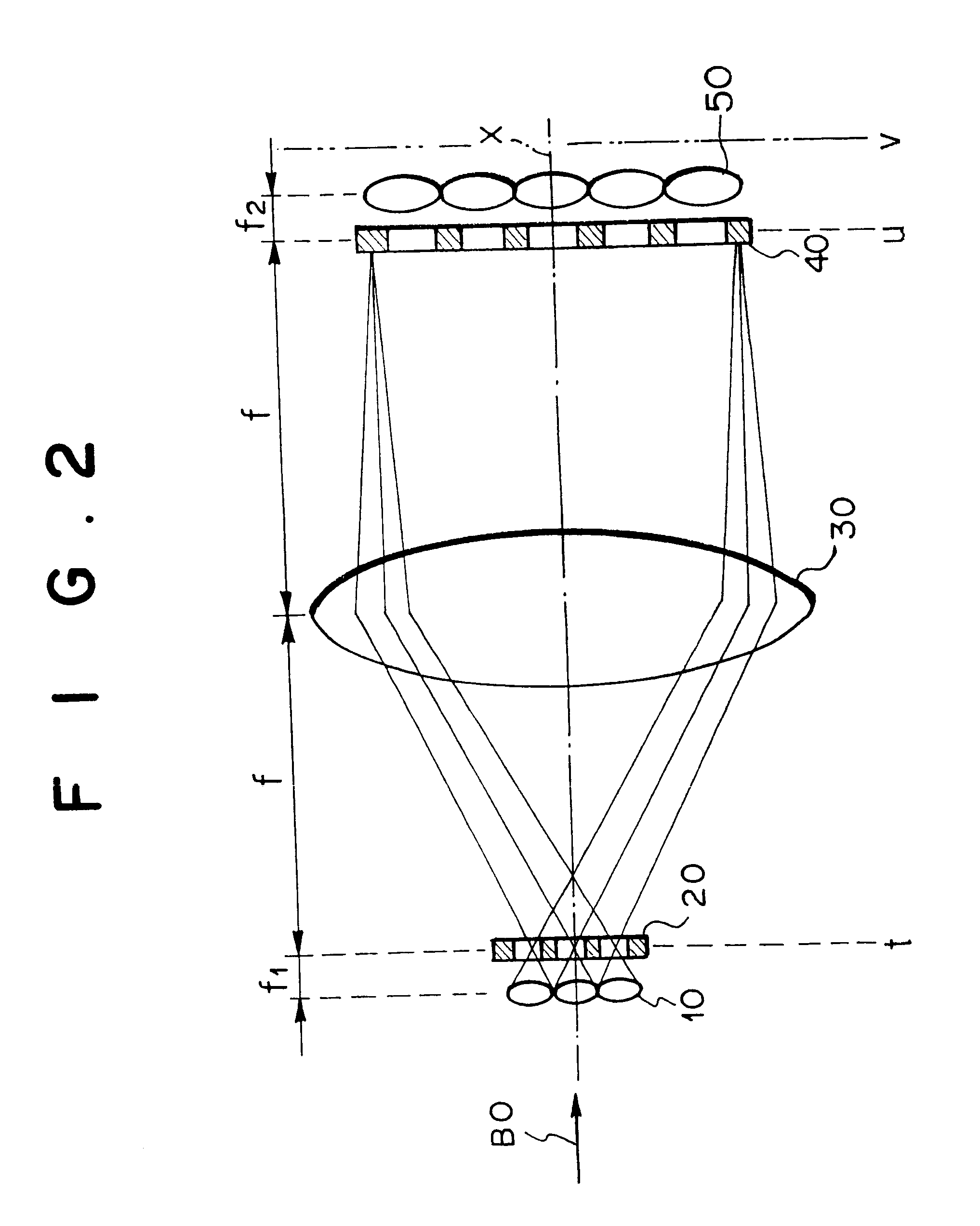Optical beam deflector modifying phases of respective portions of optical beam by two arrays of optical phase modulators
a technology of optical phase modulator and optical beam, which is applied in the direction of instruments, semiconductor lasers, lenses, etc., can solve the problems of deteriorating light beam quality, loss of laser beam energy of portions of laser beam which are diffracted in directions other than the desired direction of deflection, and impaired performance of apparatuses utilizing optical beam deflectors
- Summary
- Abstract
- Description
- Claims
- Application Information
AI Technical Summary
Benefits of technology
Problems solved by technology
Method used
Image
Examples
first embodiment
FIG. 1 is a side view illustrating the construction of the optical beam deflector as the first embodiment of the present invention. The optical beam deflector of FIG. 1 contains a lens array 10, a first optical phase modulator array 20, a Fourier transform lens 30, a second optical phase modulator array 40, a Fourier transform lens array 50, and a driving unit 60.
The lens array 10 is an array of a plurality of lenses, and collects a first plurality of portions (micro crosssections) of an incident laser beam B0 into a plurality of spots, respectively. Although only four lenses are indicated in the vertical direction in FIG. 1 for the sake of simplicity, in practice, a great number of lenses are arranged in the lens array 10. The first optical phase modulator array 20 is an array of optical phase modulators corresponding to the plurality of lenses in the lens array 10. The optical phase modulators in the first optical phase modulator array 20 separately modulate, at the plurality of s...
second embodiment
FIG. 5 is a diagram illustrating the construction of the optical beam deflector as the second embodiment of the present invention.
The optical beam deflector 100' of FIG. 5 is different from the optical beam deflector 100 of FIG. 1, in that the optical beam deflector 100' of FIG. 5 does not contain the Fourier transform lens 30, and contains a second (image-forming) lens array 50' instead of the Fourier transform lens array 50 in FIG. 1.
In the optical beam deflector 100' as the second embodiment, Fourier transformation is not performed. Instead, the first lens array 10 forms, on the back focal planes of the lenses of the first lens array 10, a plurality of spots from the plurality of portions of the laser beam B0, and images of the plurality of spots are further formed by each lens in the second lens array 50'. The first and second optical phase modulator arrays 20 and 40 are driven by the driving unit 60 to modulate the phases of the respective portions of the laser beam in a simila...
PUM
 Login to View More
Login to View More Abstract
Description
Claims
Application Information
 Login to View More
Login to View More - R&D
- Intellectual Property
- Life Sciences
- Materials
- Tech Scout
- Unparalleled Data Quality
- Higher Quality Content
- 60% Fewer Hallucinations
Browse by: Latest US Patents, China's latest patents, Technical Efficacy Thesaurus, Application Domain, Technology Topic, Popular Technical Reports.
© 2025 PatSnap. All rights reserved.Legal|Privacy policy|Modern Slavery Act Transparency Statement|Sitemap|About US| Contact US: help@patsnap.com



